OTHERNESS
Unpacking and questioning the ethics of passing versus publicizing
by Isabel Armiento
As a science-fiction fanatic, I am fascinated by the way appearance can be so instantly othering.
The “other” is often synonymous with the “grotesque” – a body that somewhat resembles our familiar schemas, yet transforms them; a body that is a hypertrophy of natural growth, littered with excess and abundance; a body that can either repulse or attract, but either way disturbs and perverts our sense of rational order. Darko Suvin argues that the point of sci-fi is “cognitive estrangement” – that the aesthetic and imaginative frameworks germane to the genre exist to reveal authentic human experience through the defamiliarizing lens of the carefully-constructed alien.
It is easy to spot difference or “otherness” when it manifests itself physically in an alien – the grotesquerie of spilling tentacles and burbling warts is an easy indication that aside from its inevitable anthropomorphisms, this creature will shift our paradigms of understanding. A predator’s vices can be read upon its body, as can a prey’s traumas: large, glistening teeth, or a vulnerable tininess. There are nuanced ethics around this reification of one’s “otherness”, though; it is more or less comfortable for one’s “otherness” – whether it be a difference, vice, or trauma – to be visible and public, à la the physical otherness of sci-fi constructions? Is it easier on the subject when her difference is evident and she can be defined by and accommodated for it – or is it easier when it can be hidden?
Nella Larsen’s book Passing is an intricate portrait of this phenomenon. Two young black women pose against a ‘20s Harlem landscape, weaving arguments for and against white passing – if hiding one’s race is within reach, allowing the passer to enjoy white privilege, should she take advantage of this? Is “passing” for white more or less ethical than publicizing one’s racial “otherness”? Spike Lee’s film BlackKklansan unpacks this dilemma further as a black man uses a white body to further his cause against the KKK – a premise complicated by the Jewishness of this particular white body, imbuing the body with a similarly marginalized identity yet the ability to “pass” and adopt the conventions of white privilege.
Similarly, there are ethics around sexuality and gender. Identifying as queer is a capacious concept, and the scope of what this means is nebulous and expansive; queerness can be visible or invisible, and much of this is to do with the individual’s choices around gender and sexual performativity. Is it a LGBTQ teacher’s duty to come out and present as queer to her students? Should she literally embody queer visibility to encourage the youth she teaches? Should this be a question of representational politics, or should it be a personal decision, and are there really any ethics involved in reifying one’s “otherness”? While a gay individual may enjoy straight privilege, however, a trans individual may or may not have the luxury of passing as cis. Does the gay individual then “owe” it to trans folk to reify her otherness? Even for a cis individual gender is complex, as womanhood and all its traumas manifest physically through a woman’s body, and often demand a certain performance of gender. Kate Zambreno’s Green Girl constructs a portrait of a girl navigating the struggles of living as a woman: “We live in fear of puncturing the moment, of forgetting our lines,” she says, revealing womanhood to be a role that one must constantly and exhaustively perform.
Mona Awad’s 13 Ways of Looking at a Fat Girl explicates the nuances of skinny privilege, and the complicated relationship between size and self-identification. Fatness is something worn on the body in a way that skinniness is not; someone suffering from anorexia may not wear her trauma on her body as readily as someone with a binge-eating disorder. In Ozeki’s My Year of Meats, one character throws up her dinner every night, starving her body into infertility. Both her physical and mental health are toppling around her, yet her body shows no noticeable trauma – save a weight loss, which is more often praised than criticized. The invisibility of the “otherness” of disordered eating is so starkly contrasted by the potent visibility of fatness, and yet both may be tumultuous and even traumatic to navigate. Should disordered eating be reified then, through self-identification? Admissions to binge-eating, self-starvation, and purging behaviour could be alienating and uncomfortable – and yet there is an complicated ethics around hiding one’s identity, and a latent, messy breed of empowerment to vocalizing the unspoken facets of identity.
A woman with a marked stutter may be discouraged from public speaking even though she has something vibrant and valuable to say; another woman with marked social anxiety may be forced to pubic speak because her anxiety is invisible. When identities lurk beneath the surface, invisible and unspoken, the opportunity for “passing” opens up, offering room to pass as someone without this unspoken identity. Skin is useful this way – sometimes it can hide identity beneath the surface, pushing it deep inside to skulk with the tissue and muscle, both part of and separate from the physical body. And yet skin itself has colour, and with that colour, meaning – reminding its wearer of the implications of passing in all its myriad forms, as well as the possibility of allowing all the bits of identity hidden underneath to leak out. Imagine: allowing identity to paint and scar the skin, planting the seeds for scales and fur, warts and claws – all the trappings of body who wears her otherness publically, like something chosen by rather than thrust upon her; sci-fi style.
About the Author:

Isabel Armiento studies English at the University of Toronto, where she is Editor-in-Chief of a campus newspaper and actively involved in several other campus publications. Her work has been published or is pending publication in Submittable, The Mighty Line, Adroit Journal, Antithesis Journal, and elsewhere, and she was a winner of the Hart House Literary Competition for prose fiction. She is a reader for Orca Literary Journal.






















